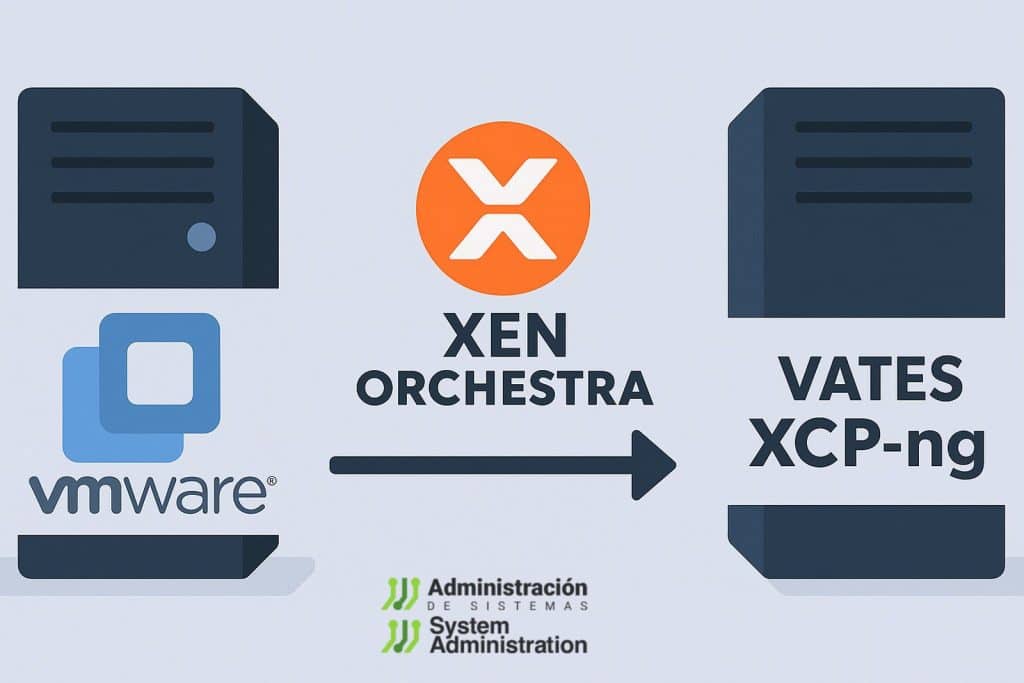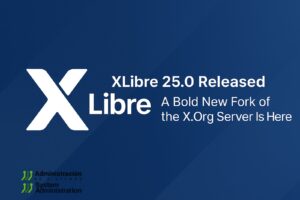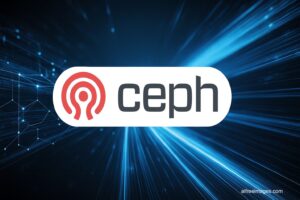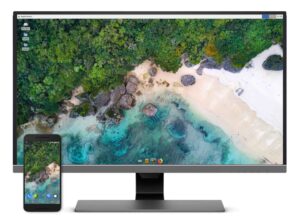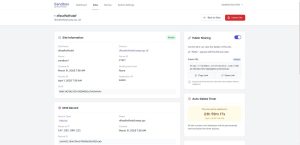As licensing costs for VMware rise and organizations seek greater technological sovereignty, XCP-ng is emerging as a robust, cost-effective, and community-driven virtualization solution.
Based on the open-source Xen hypervisor, XCP-ng offers seamless integration with Xen Orchestra (XO), enabling smooth and automated migration from platforms like VMware ESXi, KVM, VirtualBox, Hyper-V, and Citrix Hypervisor—with minimal downtime and no licensing fees.
Migrating from VMware: Efficient and Automated with XO V2V
One of the most powerful features for transitioning from VMware to XCP-ng is XO V2V (VMware to Vates), a built-in tool in Xen Orchestra that allows “warm migration” of running virtual machines. The process starts with a snapshot of the active VM on VMware, transferred in the background to the XCP-ng host. After this initial sync, the original VM is briefly shut down, and only the delta (changes since the first snapshot) is transferred—dramatically minimizing downtime.
This method only requires HTTP access to the VMware ESXi API—no direct access to the VMware datastore is needed. The entire process can be initiated and monitored via the XO web interface or run via CLI using xo-cli.
Manual Alternatives: OVA, Clonezilla, and Local Migration
For environments where full automation isn’t possible, admins can still migrate VMs using the OVA format, although it comes with longer downtime and manual steps. A more flexible alternative is Clonezilla, which enables block-level cloning from the source VM to the destination VM running on XCP-ng.
For those reinstalling XCP-ng on the same hardware, a local migration method allows direct access to VMware’s local storage and conversion of VMDK disks to VHD format using qemu-img. This method is particularly fast and efficient for large VMs.
Broad Hypervisor Compatibility
XCP-ng supports migrations from various virtualization platforms:
- From Hyper-V: Export VM disks in VHD format and import them via Xen Orchestra or using CLI with strict naming conventions.
- From KVM: Convert QCOW2 images to VHD and use
vhd-utilandxe vdi-importto properly integrate them into the XCP-ng ecosystem. - From VirtualBox: Export VMs in OVA format and import using the XO interface.
- From Citrix Hypervisor/XenServer: Use dedicated guides to streamline the process.
Key Considerations and Best Practices
During migration, it’s essential to verify BIOS vs UEFI boot modes, as some formats like OVA do not retain this metadata. Also, MAC address consistency is important, especially for retaining Windows license activation.
For direct disk transfers, the VHD file must follow a strict naming convention (UUID.vhd) and be followed by a storage rescan in XO to be recognized. Manually added disks require naming and description updates to be traceable later.
A Strategic Move Toward Open Virtualization
With its strong developer community, open-source foundation, and compatibility with a wide range of infrastructure setups, XCP-ng is a strategic choice for organizations looking to move away from costly, proprietary virtualization models. Whether you’re running a small homelab or managing enterprise infrastructure, XCP-ng offers performance, transparency, and freedom—making it one of the most promising virtualization platforms in today’s evolving IT landscape.

